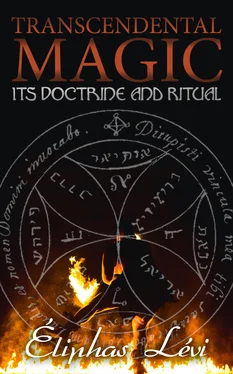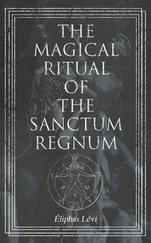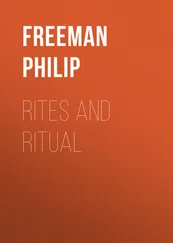1 ...6 7 8 10 11 12 ...21 But must I believe on chance and apart from reason?
Certainly not. Blind and haphazard belief is superstition and folly. We may have faith in causes which reason compels us to admit on the evidence of effects known and appreciated by science. Science! Great word and great problem! What is science? We shall answer in the second chapter of this book.
II  B
B
THE PILLARS OF THE TEMPLE
Table of Contents
CHOKMAH DOMUS GNOSIS
SCIENCE is the absolute and complete possession of truth. Hence have the sages of all the centuries trembled before such an absolute and terrible word; they have hesitated in arrogating to themselves the first privilege of Divinity by assuming the possession of science, and have been contented, instead of the verb TO KNOW, with that which expresses learning, while, in place of the word SCIENCE, they have adopted that of GNOSIS, which represents simply the notion of learning by intuition. What, in fact, does man know? Nothing, and at the same time he is allowed to ignore nothing. Devoid of knowledge, he is called upon to know all. Now, knowledge supposes the duad – a being who knows and an object known. The duad is the generator of society and of law: it is also the number of the Gnosis. The duad is unity multiplying itself in order to create, and hence in sacred symbolism Eve issues from the inmost bosom of Adam. Adam is the human tetra-gram, summed up in the mysterious JOD, type of the kabalistic phallus. By adding to this JOD the triadic name of Eve, the name of Jehova is formed, the Divine Tetragram, which is eminently the kabalistic and magical word,  being that which the high-priest in the temple pronounced JODCHEVA. So unity, complete in the fruitfulness of the triad, forms therewith the tetrad, which is the key of all numbers, of all movements and of all forms. By a revolution about its own centre, the square produces a circle equal to itself, and this is the quadrature of the circle, the circular movement of four equal angles around the same point.
being that which the high-priest in the temple pronounced JODCHEVA. So unity, complete in the fruitfulness of the triad, forms therewith the tetrad, which is the key of all numbers, of all movements and of all forms. By a revolution about its own centre, the square produces a circle equal to itself, and this is the quadrature of the circle, the circular movement of four equal angles around the same point.
“That which is above equals that which is below,” says Hermes. Here then is the duad serving as the measure of unity, and the relation of equality between above and below forms with these the triad. The creative principle is the ideal phallus; the created principle is the formal cteis. The insertion of the vertical phallus into the horizontal cteis forms the stauros of the Gnostics, or the philosophical cross of Masons. Thus, the intersection of two produces four, which, by its movement, defines the circle with all degrees thereof.
 is man;
is man;  is woman; 1 is the principle; 2 is the word; A is the active; B is the passive; the monad is BOAZ; the duad is JAKIN. In the trigrams of Fohi, unity is the YANG and the duad is the YIN.
is woman; 1 is the principle; 2 is the word; A is the active; B is the passive; the monad is BOAZ; the duad is JAKIN. In the trigrams of Fohi, unity is the YANG and the duad is the YIN.

BOAZ and JAKIN are the names of the two symbolical Pillars before the principal entrance of Solomon's Kabalistic Temple. In the Kabalah these Pillars explain all mysteries of antagonism, whether natural, political or religious. They elucidate also the procreative struggle between man and woman, for, according to the law of Nature, the woman must resist the man, and he must entice or overcome her.
The active principle seeks the passive principle, the plenum desires the void, the serpent's jaw attracts the serpent's tail, and in turning about upon himself, he, at the same time, flies and pursues himself. Woman is the creation of man, and universal creation is the bride of the First Principle.
When the Supreme Being became a Creator, He erected a JOD or a phallus, and to provide a place in the fullness of the uncreated light, it was necessary to hollow out a cteis or trench of shadow equivalent to the dimension determined by his creative desire, and attributed by him to the ideal JOD of the radiating light. Such is the mysterious language of the Kabalists in the Talmud, and on account of vulgar ignorance and malignity, it is impossible for us to explain or simplify it further.
What then is creation? It is the house of the creative Word. What is the cteis? It is the house of the phallus. What is the nature of the active principle? To diffuse.
What is that of the passive? To gather in and to fructify. What is man? He who initiates, who toils, who furrows, who sows. What is woman? She who forms, unites, irrigates and harvests. Man wages war, woman brings peace about; man destroys to create, woman builds up to preserve; man is revolution, woman is conciliation; man is the father of Cain, woman the mother of Abel. What also is wisdom? It is the agreement and union of two principles, the mildness of Abel directing the activity of Cain, man guided by the sweet inspirations of woman, debauchery conquered by lawful marriage, revolutionary energy softened and subdued by the gentleness of order and peace, pride subjugated by love, science acknowledging the inspirations of faith. It is then that science becomes wise and submits to the infallibility of universal reason, instructed by love or universal charity. Then it can assume the name of GNOSIS, because it knows at least that as yet it cannot boast of knowing perfectly.
The monad can manifest only by the duad; unity itself and the notion of unity at once constitute two. The unity of the Macrocosm reveals itself by the two opposite points of two triangles. Human unity fulfils itself to right and left. Primitive man is androgynous. All organs of the human body are disposed in pairs, excepting the nose, the tongue, the umbilicus and the kabalistic JOD. Divinity, one in its essence, has two essential conditions as the fundamental grounds of its being – necessity and liberty. The laws of supreme reason necessitate and rule liberty in God, Who is of necessity wise and reasonable.
To make light visible God had only to postulate shadow. To manifest the truth He permitted the possibility of doubt. The shadow bodies forth the light, and the possibility of error is essential for the temporal manifestation of truth. If the buckler of Satan did not intercept the spear of Michael, the might of the angel would be lost in the void or manifested by infinite destruction launched below from above. Did not the heel of Michael restrain Satan in his ascent, Satan would dethrone God, or rather he would lose himself in the abysses of the altitude.
Hence Satan is needful to Michael as the pedestal to the statue, and Michael is necessary to Satan as the brake to the locomotive. In analogical and universal dynamics one leans only on that which resists. Furthermore, the universe is balanced by two forces which maintain it in equilibrium, being the force which attracts and that which repels. They exist alike in physics, in philosophy and in religion; in physics they produce equilibrium, in philosophy criticism, in religion progressive revelation. The ancients represented this mystery by the conflict between Eros and Anteros, the struggle between Jacob and the angel, and by the equilibrium of the golden mountain, which gods on the one side and demons on the other encircle with the symbolic serpent of India. It is typified also by the caduceus of Hermanubis, by the two cherubim of the ark, by the twofold sphinx of the chariot of Osiris and by the two seraphim – respectively black and white. Its scientific reality is demonstrated by the phenomena of polarity, as also by the universal law of sympathies and antipathies.
Читать дальше

 B
B being that which the high-priest in the temple pronounced JODCHEVA. So unity, complete in the fruitfulness of the triad, forms therewith the tetrad, which is the key of all numbers, of all movements and of all forms. By a revolution about its own centre, the square produces a circle equal to itself, and this is the quadrature of the circle, the circular movement of four equal angles around the same point.
being that which the high-priest in the temple pronounced JODCHEVA. So unity, complete in the fruitfulness of the triad, forms therewith the tetrad, which is the key of all numbers, of all movements and of all forms. By a revolution about its own centre, the square produces a circle equal to itself, and this is the quadrature of the circle, the circular movement of four equal angles around the same point. is man;
is man; 











